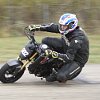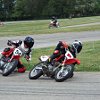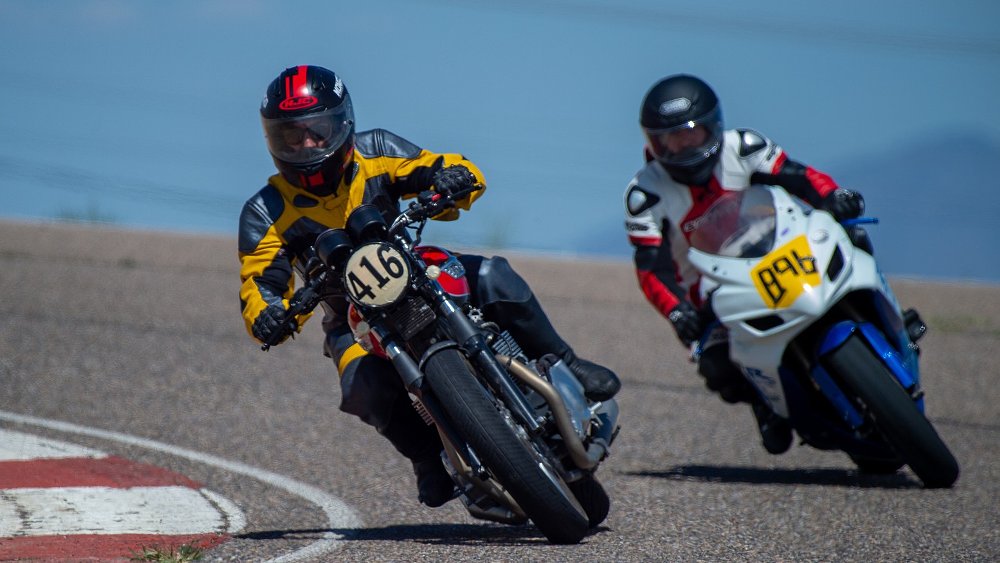When I first heard about mini road racing, I figured it was something for little kids to do just for kicks. Riding a 100 cc dirt bike around a paved kart track sounded akin to snail racing. What would those laps times be like? Could you lean a little XR100 far enough to drag a knee?
After going to several Ohio Mini Roadracing League events in recent years, I learned just how wrong I was. It wasn’t just elementary school kids doing their best to stay between the white lines. I’ve watched racers of all ages and skill levels take to the track, and the smiles on their faces when they came off the track screamed just how much fun they were having. Best of all, they’re doing it for a fraction of the cost (and a lot less risk) compared to thrashing a full-size sport bike around Circuit of the Americas.
In the beginning...
One of the first things that surprised me about the OMRL is how long it’s been around. According to former club president Kent Klawon, the OMRL got its start in 1999 as the Ohio YSR League. Most of the first members were amateur road racers who wanted to race their little two-stroke Yamaha YSR50 pit bikes. The group was led by Jeff “Maverick” Arend, who sadly passed less than a year later. Klawon showed up to his first OMRL race with a couple of friends in 2005 and they were among the few to be out there on Honda XR100s. Now, the little XR is the most popular bike in the paddock.
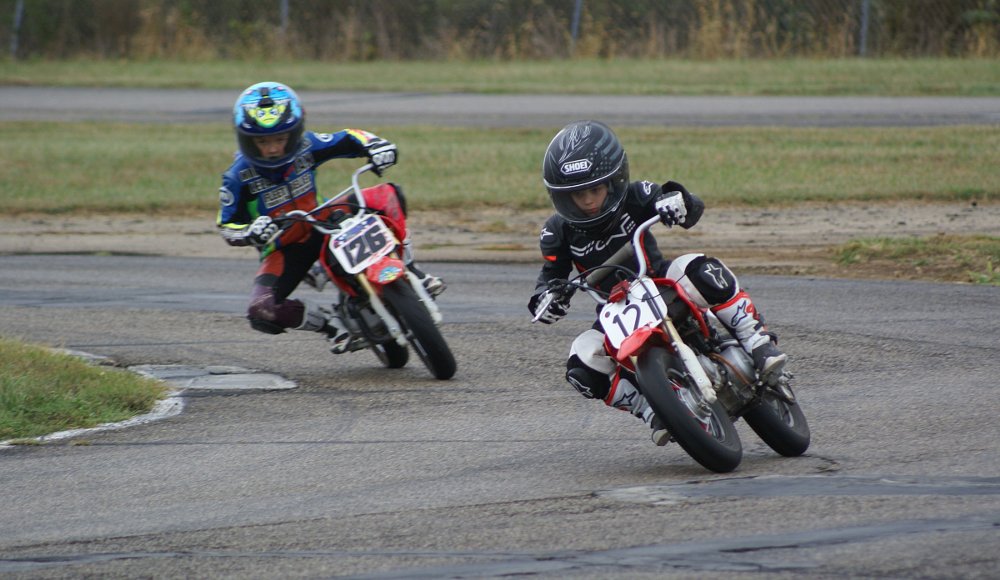
Another long-time OMRL racer and former club president, Brian Conrad, almost didn’t show up to his first OMRL race in 2002.
“I [had] just got out of the military and was looking for new friends who enjoy racing,” he said. “I quickly found a group of people who take weekend trips down to the southeast Ohio twisty roads. One of them raced a YSR50, and he knew I did a few track days on my then R6. So, he invited me to race his bike and give it a try. I almost didn’t show up because of my ego — thinking minis were for kids — but I’m glad I showed up.”
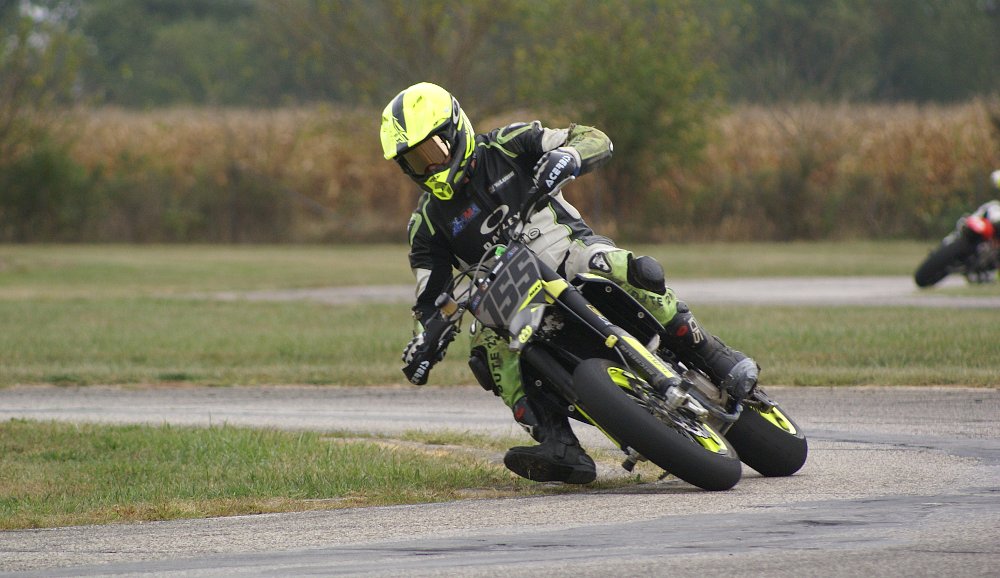
It's amazing how welcoming the group is. Jared Trees grew up attending the annual AMA Superbike races at Mid-Ohio Sports Car Course. He wanted to get on track himself but lacked the finances and know-how to get started in the sport. That changed when he got invited to the last race of the 2005 Ohio YSR League season after a chance encounter with a racer’s father.
“They were so excited to have a potential new racer that they offered me a bike, gear and everything [else] I needed,” Trees said. “I think I made it to about turn three before I decided I was going to figure out a way to save the money to buy [a bike] for myself.”
While Trees crashed during his first race weekend, the owner of the bike and gear he was using wasn’t upset and even encouraged Trees to continue developing his racing skillset. Trees ended up spending the remainder of the day watching the rest of the event’s races, studying the lines and techniques the fast riders were using.
A more recent convert is Andy Schaffnit. A friend convinced him to give mini road racing a try and he found himself on a 25-rider grid for his first-ever OMRL race about two years ago. Despite having experience at track days on full-size sport bikes, he quickly found out he still had a lot to learn.
“It was pitiful how slow I was on the little bike,” Schaffnit said. “I had to fight, scrape and claw for every half-second gain, especially given my six-foot, six-inch build. Weight is a huge disadvantage, and I needed to find ways to mitigate the problem in order to see progress. This drove me to get to the track every free day that I could and turn laps.”
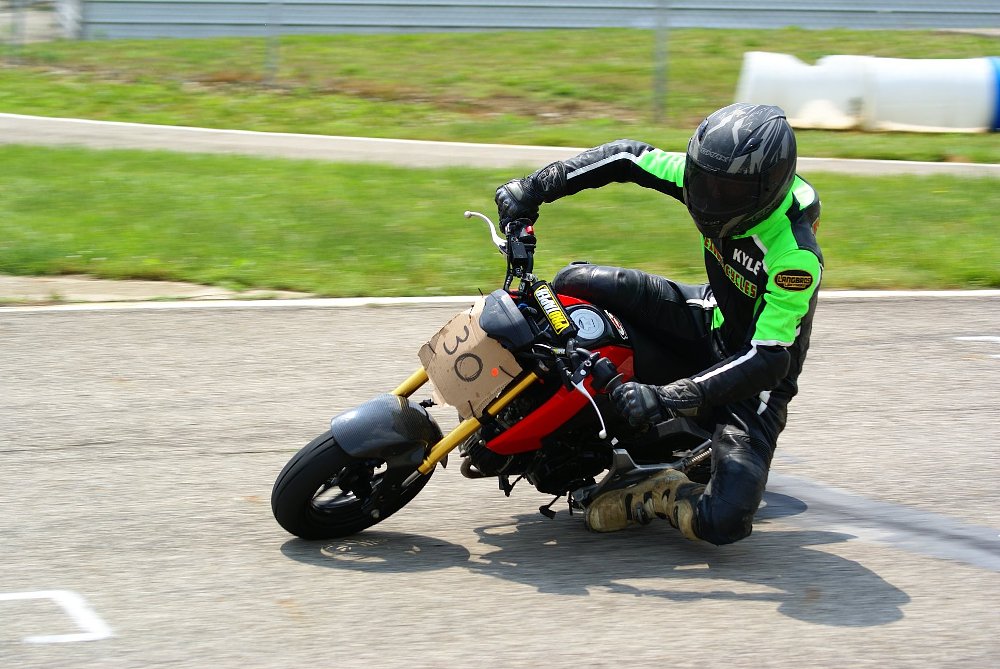
Mini road racing is for everyone
While the Stock Moto Class (mostly Honda XR100s and CRF100s) is by far the club’s most popular class, there are other classes for machinery ranging from 50 cc two-strokes to 650 cc supermoto bikes. The human diversity is as great as the mechanical variety, too.
“I was surprised to see the demographics that show up,” Schaffnit said. “There are older folks, kids, men, women, from just about all walks of life. Everybody is there for the love of the sport… and pre-race and post-race shenanigans.”
While the racing is mostly adults and just for fun, it is also a great platform for up-and-coming young road racers to hone their craft.
"You’ll see kids here for a few seasons and they get faster and faster,” Conrad said. “It’s fun to watch them grow on track. Then eventually you’ll see them racing in MotoAmerica in the Junior Cup.”

One rider who made the jump to the pro ranks is Gavin Anthony, who competed in the OMRL before turning pro for the 2017 MotoAmerica season. He raced two years in MotoAmerica’s development classes (KTM RC 390 Cup and Junior Cup), scoring four podium finishes. Another is Trees, who raced in WERA and the Championship Cup Series before competing in several MotoAmerica Twins Cup races in 2019. Trees is also a Motorcycle Mechanics Institute grad and has wrenched for a MotoAmerica team, as well.
Can going 50 mph or less be that much fun?
For twisty-road blasters and track-day junkies, mini road racing may still sound a bit dull. Trees will advise you not to judge the sport by the size of the tracks or engines.
“The tracks are small, so unless you look around you feel like you’re going faster than you are,” Trees said. “You actually have a lot less time to do things like braking, turning and accelerating on a small bike compared to a full-size motorcycle on a big road course.”
Then there's the intellectual side of improving racecraft.
“I love solving the puzzle of the rider in front of me," said Schaffnit. "Where are they weak? Where can I get around them? Do I need to wait to pass right before the esses so they can't immediately run me down on the straight because I weigh 100 pounds more than they do?”
Schaffnit also will tell you that mini moto racing has made him a better rider on the road and on full-size road courses. He said his short time racing minis has taught more than his previous 12 years of full-size motorcycle riding.

“I believe the decision to start mini racing has been the single best thing I have done for myself as a rider,” Schaffnit said. “The ability to push these little bikes to their limits is tremendously beneficial in learning feel, sight, experiencing what changes in body position can accomplish."
Riders have confidence to push to those limits because the consequences of mistakes are much smaller.
“Crashing is almost painless at the speeds we are going,” said Dustin May, who has been racing since age four. “It gives everyone the confidence to ride [their] bike to its limit."
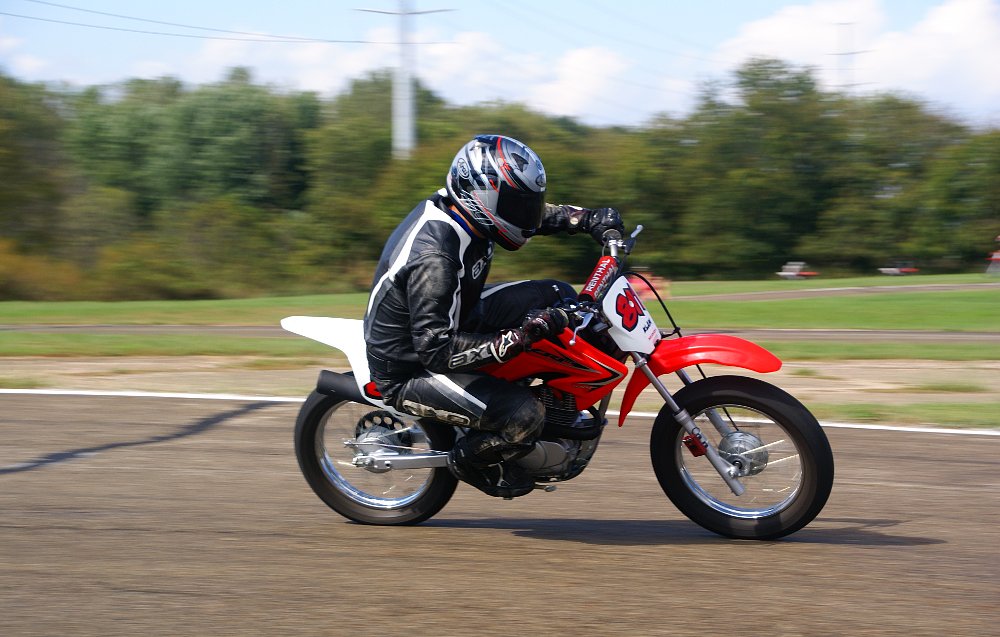
OK, so how much is this going to cost me?
The other advantage of mini road racing is the cost. A used Honda XR100 or CRF100 will set you back about $500 to $1,000, on average. Then there’s the cost of prepping the bike for competition (safety wiring, road tires and the like). Of course, there’s gear, fuel, registration fees, gate fees and transponder rental fees. Does that sound like a lot? It may, but in the end, you’re probably spending less than many hockey parents, and it's very cheap by motorcycle racing standards.
“If you had nothing, a person could be on track after purchasing safety equipment and a used race bike for about $2,000,” estimated Klawon. Trees said he spent about $1,200 on the initial bike and gear purchase (used gear and a closeout helmet) and believes competitors could get through a racing season on as little as $1,200. Most of the bikes are light enough to go on a hitch carrier behind an ordinary car, so you don't have to buy a full-size pickup to get your race bike to the track. Each class entry costs $60 and that gets you two practice sessions and two races.

The low costs and welcoming paddock have helped double the OMRL's grid counts. According to Klawon, the average turnout at an event was 20 to 25 when he started in club administration in 2010. More recently, the club has averaged 40 to 60 racers per race weekend.
The OMRL shows that when it comes to racing, one way to get bigger is to think smaller.

 Membership
Membership





